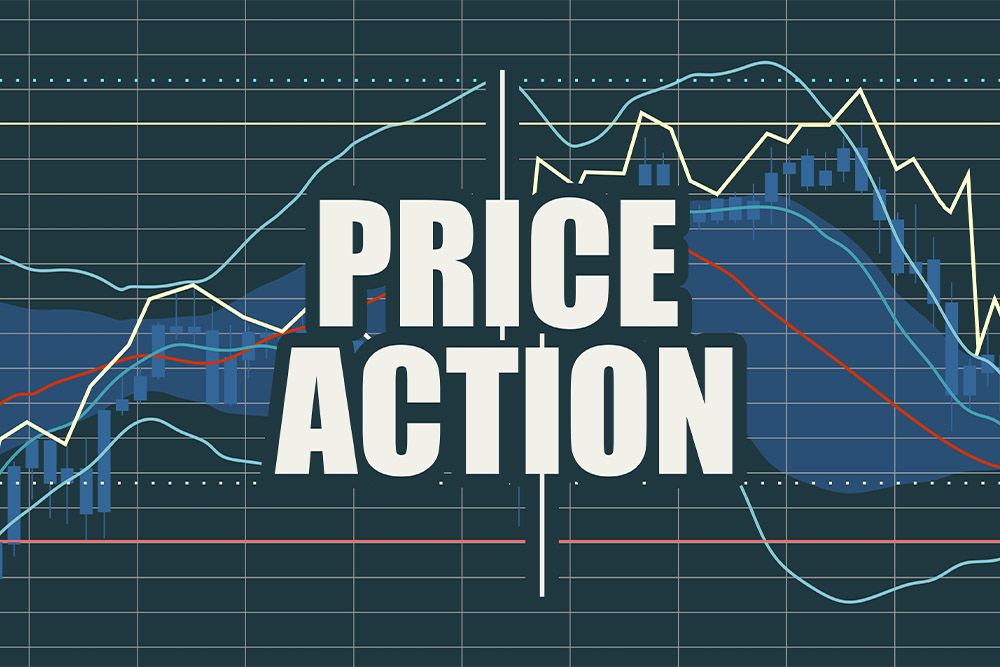To make a profit when trading FX, you need to identify the times when the price of a security is moving and then successfully buy or sell the moves.
When we boil the FX trading process down to its simplest form, that’s what we’re searching for on our charts. Is price rising or falling? Can we try to bank profit based on the movement of the security’s price?
With price action trading, we concentrate on price only. Price action is a study of price relating to past price history; price action is fundamentally a study of how price changes over a set period.
Price action is a form of technical analysis without relying on technical indicators. Price action analysis suggests that price reflects everything. Therefore, price is the only indicator traders need.
Identifying price action through candlesticks
All technical indicators use price as the basis of their mathematical calculations. A simple moving average (SMA) is one of the most basic technical indicators, and its value gets calculated as an average of price measured over a specified time.
Price action analysts and traders would suggest that because all technical indicators are a derivative of price, concentrating on price as the only useful indicator is the only approach you need.
We still need a tool to represent price action on the trading charts and time frames we select. We mostly use standard candlesticks or Heikin-Ashi bars to represent price. But some forex traders who favour price action FX trading will default to using a line only because they have no faith in the theory behind candlestick patterns.
For those who prefer to use candlesticks, they’ll look for various patterns, such as bullish/bearish engulfing bars, shooting stars, Dojis, pin bars, spinning tops etc. as evidence that price action is occurring. You’re looking for proof that the price of a security is suddenly breaking out of a current range, or reversing direction. According to anecdotal evidence and various studies, price tends to range 80% of the time and trend 20% of the time.
Price action supported by other analysis tools
So, we’re trying to find the times when price trends and capture that movement. The direction could be a daily trend propelled by a spike, or a news event could suddenly alter the course of a security’s price and cause a new trend direction to develop or add fuel to an existing trend.
In practice, most price action traders will use forms of technical analysis alongside searching for their candlestick patterns. There’s a significant issue with candlestick patterns; the patterns vary depending on the time frame. What you see on a 1hr time frame probably won’t be visible on the 4hr or the daily time frame.
Because of this, traders might apply support and resistance (pivot points) and moving averages to their analysis. They’re still using a mostly vanilla chart to make their trading decisions, but with added tools to give confidence to their choices.
Trading idea and concept using price action
So let’s walk through a trading idea using price action based on an actual event causing the price of an FX currency pair to move out of its previous ranging conditions.
Let’s suggest there’s a breakthrough in the UK v EU Brexit talks in late December 2020. GBP/USD which has been trading in a bullish trend and range for several days rises further as the counterparties negotiating the deal agree to a method for the UK to keep single market access.
The rapid rise is now evident on our 1hr time frame, and the two most recent 1hr Heikin Ashi candles are closed, full and bullish. Also, the price of GBP/USD has breached the first level of resistance R1 and is now threatening to breach R2. We look at the 14 SMA (fourteen-day moving average), and see that price is trading above the MA and above the 7 EMA (seven-day exponential moving average).
The rules you’ve embedded into your trading plan and strategy allow you to take a long trade if the price is above R1, the candlesticks are bullish, and the price is trading above the MAs mentioned. Price action trading isn’t a mysterious phenomenon, it’s as easy to put into practice as our simple example suggests. You need to confidence to reduce your charts back to their vanilla appearance, and to spend some time identifying previous patterns, while putting the theory to test based on what happens next.


